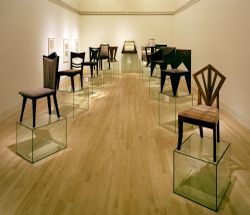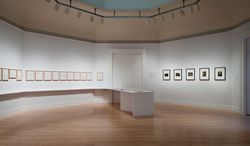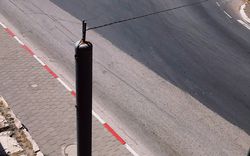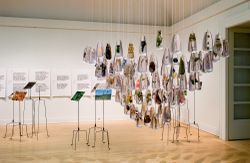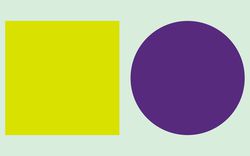archives
Level of archival description:
Fonds
Gene Summers fonds
AP114
Synopsis:
The Gene Summers fonds documents primarily the later part of Gene Summers' career as an architect, developer, artist and art collector. Summer's early work with the Office of Mies van der Rohe and C.F. Murphy Associates is summarily represented by notes, sketches and photographs.
1957 - 2004
Gene Summers fonds
Actions:
AP114
Synopsis:
The Gene Summers fonds documents primarily the later part of Gene Summers' career as an architect, developer, artist and art collector. Summer's early work with the Office of Mies van der Rohe and C.F. Murphy Associates is summarily represented by notes, sketches and photographs.
archives
Level of archival description:
Fonds
1957 - 2004
Combining enthusiasm for the radically new world view of cubist art with a desire to establish an autonomous aesthetic as well as political presence, the Czech cubists produced not only powerful visionary work, but also went beyond theory to practice. Czech Cubism: Architecture and Design, 1910–1925 brings together the work of a group of Czech artists, architects, and(...)
Main galleries
10 June 1992 to 2 August 1992
Czech Cubism: Architecture and Design, 1910–1925
Actions:
Description:
Combining enthusiasm for the radically new world view of cubist art with a desire to establish an autonomous aesthetic as well as political presence, the Czech cubists produced not only powerful visionary work, but also went beyond theory to practice. Czech Cubism: Architecture and Design, 1910–1925 brings together the work of a group of Czech artists, architects, and(...)
Main galleries
Project
Quinta da Bela Flor, Lisboa
CD034.S1.1976.PR01
Description:
This project series contains one reproduction of a photograph displayed in the exhibit to document the Quinta da Bela Flor neighbourhood, in Lisbon, Portugal. The exhibit text explained that: Artur Rosa's project in the neighbourhood grew out of a shanty town, built on a difficult site, dating back to the 19th century, with reports of families living in hillside caves that today flank the entrance to a nearby highway. The process was based on voluntary work, and its ending presented a huge disappointment to the local brigade. In 1976 and 1977, Artur Rosa, also a practicing artist, produced three works that reflected on SAAL, its failure and the subsequent sense of persecution felt by many brigade leaders. The decision not to present the project but rather the artistic interventions aims at revealing the performative nature of the process, its poetic intensity and the way it related to its protagonists. In 1977 the architect presented a performance at the Fine Arts Society in Lisbon in which he closed the documentation of the project in a darkened room. The following year, he presented a structure with the documentation closed inside, and finally he used the project drawings in a collage with photographs on the occasion of the first public tap in Quinta da Bela-Flor. Those poetic artistic interventions are his form of publicly mourning the end of the SAAL process. (The SAAL Process, Housing in Portugal 1974–76) Artur Rosa worked for SAAL/Lisbon and Central South with Etelvina José, Hélio Oliveira, José Luís Teles Rebolo, José Miguel Fonseca, Luís Pereira, Manuel Coutinho Raposo, Maria Fernanda Carvalho, Maria Isabel Rodrigues Lobo, Nuno Blanco Bártolo, Nuno Martins and the residents' association Cooperativa de Habitação Económica Bela Flor, that was founded on February 13th, 1976. The project included 288 dwellings. The operation began in September 1976, with a construction date in December 1976. This project series contains a reproduction of a photograph of a model. The original photograph was produced around 1976 and was reproduced in 2015 for the exhibit.
circa 1976
Quinta da Bela Flor, Lisboa
Actions:
CD034.S1.1976.PR01
Description:
This project series contains one reproduction of a photograph displayed in the exhibit to document the Quinta da Bela Flor neighbourhood, in Lisbon, Portugal. The exhibit text explained that: Artur Rosa's project in the neighbourhood grew out of a shanty town, built on a difficult site, dating back to the 19th century, with reports of families living in hillside caves that today flank the entrance to a nearby highway. The process was based on voluntary work, and its ending presented a huge disappointment to the local brigade. In 1976 and 1977, Artur Rosa, also a practicing artist, produced three works that reflected on SAAL, its failure and the subsequent sense of persecution felt by many brigade leaders. The decision not to present the project but rather the artistic interventions aims at revealing the performative nature of the process, its poetic intensity and the way it related to its protagonists. In 1977 the architect presented a performance at the Fine Arts Society in Lisbon in which he closed the documentation of the project in a darkened room. The following year, he presented a structure with the documentation closed inside, and finally he used the project drawings in a collage with photographs on the occasion of the first public tap in Quinta da Bela-Flor. Those poetic artistic interventions are his form of publicly mourning the end of the SAAL process. (The SAAL Process, Housing in Portugal 1974–76) Artur Rosa worked for SAAL/Lisbon and Central South with Etelvina José, Hélio Oliveira, José Luís Teles Rebolo, José Miguel Fonseca, Luís Pereira, Manuel Coutinho Raposo, Maria Fernanda Carvalho, Maria Isabel Rodrigues Lobo, Nuno Blanco Bártolo, Nuno Martins and the residents' association Cooperativa de Habitação Económica Bela Flor, that was founded on February 13th, 1976. The project included 288 dwellings. The operation began in September 1976, with a construction date in December 1976. This project series contains a reproduction of a photograph of a model. The original photograph was produced around 1976 and was reproduced in 2015 for the exhibit.
Project
circa 1976
Portuguese architect Álvaro Siza travelled to Peru in 1995 with his usual baggage: only a few changes of clothes, some books of poetry, and a single sketchbook. This was the toolkit he used to interpret the voyage and integrate it into his architecture. More than half a century earlier, Peruvian photographer Martín Chambi had taken his famous series of portraits of the(...)
Octagonal gallery
26 January 2012 to 29 April 2012
Alturas de Machu Picchu: Martín Chambi – Álvaro Siza at work
Actions:
Description:
Portuguese architect Álvaro Siza travelled to Peru in 1995 with his usual baggage: only a few changes of clothes, some books of poetry, and a single sketchbook. This was the toolkit he used to interpret the voyage and integrate it into his architecture. More than half a century earlier, Peruvian photographer Martín Chambi had taken his famous series of portraits of the(...)
Octagonal gallery
archives
Level of archival description:
Fonds
Peter Carter fonds
AP047
Synopsis:
The Peter Carter fonds, 1943-1996, documents the professional career of architect Peter Carter. The largest portion of the archive corresponds to projects Carter completed as principal of the office, Peter Carter Architect (1974-96). Materials in this fonds consist of 7263 drawings (including reprographic copies), 2007 photographic materials, approximately 65 panels, 3 l.m. of textual records, 26 models, 1 enclosing unit, 1 carpet sample, 1 graphic design layout for stationery letterhead, 1 brown oak sample, 1 window sample, 1 sign, 1 carioca stone, 1 travertine block and 1 grey carpet tile.
1943-1996
Peter Carter fonds
Actions:
AP047
Synopsis:
The Peter Carter fonds, 1943-1996, documents the professional career of architect Peter Carter. The largest portion of the archive corresponds to projects Carter completed as principal of the office, Peter Carter Architect (1974-96). Materials in this fonds consist of 7263 drawings (including reprographic copies), 2007 photographic materials, approximately 65 panels, 3 l.m. of textual records, 26 models, 1 enclosing unit, 1 carpet sample, 1 graphic design layout for stationery letterhead, 1 brown oak sample, 1 window sample, 1 sign, 1 carioca stone, 1 travertine block and 1 grey carpet tile.
archives
Level of archival description:
Fonds
1943-1996
articles
Fictions of Fictions
Fictions of Fictions
Piper Bernbaum on the material facts and urban fictions of the Eruv wars in Jerusalem
Actions:
Figuring Territory
Environment: Approaches for Tomorrow broaches issues such as energy consumption and natural resources, the question of limiting humanity’s control of the environment, the search for renewable resources, and the optimal means to employ them. Through the work of French horticultural engineer and landscape architect Gilles Clément and Swiss architect Philippe Rahm, the(...)
Main galleries
18 October 2006 to 10 June 2007
Environment: Approaches for Tomorrow
Actions:
Description:
Environment: Approaches for Tomorrow broaches issues such as energy consumption and natural resources, the question of limiting humanity’s control of the environment, the search for renewable resources, and the optimal means to employ them. Through the work of French horticultural engineer and landscape architect Gilles Clément and Swiss architect Philippe Rahm, the(...)
Main galleries
textual records
ARCH276059
Description:
7 files - Group contains: Union of Architects (UIA) correspondence; University courses etc.; Canada China Trade Council; Canadian Board of Practicing Architects; Architectural Institute of British Columbia (AIBC) registration lists; Royal Canadian Academy of Arts misc. correspondence; Gutheim Seelig Erickson.
ca. 1977-1979
Correspondence from various arts and architecture associations
Actions:
ARCH276059
Description:
7 files - Group contains: Union of Architects (UIA) correspondence; University courses etc.; Canada China Trade Council; Canadian Board of Practicing Architects; Architectural Institute of British Columbia (AIBC) registration lists; Royal Canadian Academy of Arts misc. correspondence; Gutheim Seelig Erickson.
textual records
ca. 1977-1979
archives
Level of archival description:
Fonds
Roland Dumais fonds
AP005
Synopsis:
The Roland Dumais fonds, 1930-1975, documents architect Roland Dumais’s design and construction of over 500 built projects in Québec. In addition to documenting Dumais’s professional career (1935-1971), the fonds includes materials relating to the everyday administration of Dumais’s architectural firm (1941-1977) as well as materials pertaining to his personal life (1932-1982). Materials in this fonds consist of approximately 12 400 drawings (including reprographic copies), 126 photographic materials, 10.33 l.m. of textual records, 5 models, and 3 reels of 16 mm film.
1930-1975
Roland Dumais fonds
Actions:
AP005
Synopsis:
The Roland Dumais fonds, 1930-1975, documents architect Roland Dumais’s design and construction of over 500 built projects in Québec. In addition to documenting Dumais’s professional career (1935-1971), the fonds includes materials relating to the everyday administration of Dumais’s architectural firm (1941-1977) as well as materials pertaining to his personal life (1932-1982). Materials in this fonds consist of approximately 12 400 drawings (including reprographic copies), 126 photographic materials, 10.33 l.m. of textual records, 5 models, and 3 reels of 16 mm film.
archives
Level of archival description:
Fonds
1930-1975
In conjunction with the exhibition The Other Architect, Todd Rouhe and Rachel Himmelfarb of common room present the groups collaborative working process: This question—what’s the problem?—is central to how common room works. The question defines a process of searching, experiencing, interacting, and communicating that not only informs how we understand architecture and(...)
Paul-Desmarais Theatre
19 November 2015
common room: What's the Problem?
Actions:
Description:
In conjunction with the exhibition The Other Architect, Todd Rouhe and Rachel Himmelfarb of common room present the groups collaborative working process: This question—what’s the problem?—is central to how common room works. The question defines a process of searching, experiencing, interacting, and communicating that not only informs how we understand architecture and(...)
Paul-Desmarais Theatre
